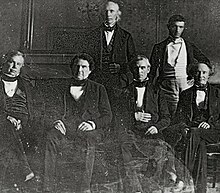From Wikipedia, the free encyclopedia

Great Seal of the United States |
|

President Joe Biden’s Cabinet pictured in July 2021 |
|
| Formation | March 4, 1789 (234 years ago) |
|---|---|
| Legal status | Inferred (Opinion Clause) |
| Purpose | Advisory body to the president of the United States |
| Location |
|
|
President of the United States |
Joe Biden |
|
Membership |
24 members (not counting the VP):
|
| Website | www.whitehouse.gov |
The Cabinet of the United States is a body consisting of the vice president of the United States and the heads of the executive branch’s departments in the federal government of the United States. It is the principal official advisory body to the president of the United States. The president chairs the meetings but is not formally a member of the Cabinet. The heads of departments, appointed by the president and confirmed by the Senate, are members of the Cabinet, and acting department heads also participate in Cabinet meetings whether or not they have been officially nominated for Senate confirmation. The president may designate heads of other agencies and non-Senate-confirmed members of the Executive Office of the President as members of the Cabinet.
The Cabinet does not have any collective executive powers or functions of its own, and no votes need to be taken. There are 24 members (25 including the vice president): 15 department heads and nine Cabinet-level members, all of whom, except two, require Senate confirmation. The Cabinet meets with the president in a room adjacent to the Oval Office. The members sit in the order in which their respective department was created, with the earliest being closest to the president and the newest farthest away.[1]
The members of the Cabinet serve at the pleasure of the president, who can dismiss them at any time without the approval of the Senate, as affirmed by the Supreme Court of the United States in Myers v. United States (1926) or downgrade their Cabinet membership status. Often it is legally possible for a Cabinet member to exercise certain powers over his or her own department against the president’s wishes, but in practice this is highly unusual due to the threat of dismissal. The president also has the authority to organize the Cabinet, such as instituting committees. Like all federal public officials, Cabinet members are also subject to impeachment by the House of Representatives and trial in the Senate for «treason, bribery, or other high crimes and misdemeanors».
The Constitution of the United States does not explicitly establish a Cabinet. The Cabinet’s role, inferred from the language of the Opinion Clause (Article II, Section 2, Clause 1) of the Constitution is to provide advice to the president. Additionally, the Twenty-fifth Amendment authorizes the vice president, together with a majority of the heads of the executive departments, to declare the president «unable to discharge the powers and duties of his office». The heads of the executive departments are—if eligible—in the presidential line of succession.
History[edit]
James K. Polk and his Cabinet in 1846: the first Cabinet to be photographed.
The tradition of the Cabinet arose out of the debates at the 1787 Constitutional Convention regarding whether the president would exercise executive authority solely or collaboratively with a cabinet of ministers or a privy council. As a result of the debates, the Constitution (Article II, Section 1, Clause 1) vests «all executive power» in the president singly, and authorizes—but does not compel—the president (Article II, Section 2, Clause 1) to «require the Opinion, in writing, of the principal Officer in each of the executive Departments, upon any Subject relating to the Duties of their respective Offices».[2][3] The Constitution does not specify what the executive departments will be, how many there will be, or what their duties will be.
George Washington, the first president of the United States, organized his principal officers into a Cabinet, and it has been part of the executive branch structure ever since. Washington’s Cabinet consisted of five members: himself, Secretary of State Thomas Jefferson, Secretary of the Treasury Alexander Hamilton, Secretary of War Henry Knox and Attorney General Edmund Randolph. Vice President John Adams was not included in Washington’s Cabinet because the position was initially regarded as a legislative officer (president of the Senate).[4] Furthermore, until there was a vacancy in the presidency (which did not occur until the death of William Henry Harrison in 1841) it was not certain that a vice president would be allowed to serve as president for the duration of the original term as opposed to merely acting as president until new elections could be held. It was not until the 20th century that vice presidents were regularly included as members of the Cabinet and came to be regarded primarily as a member of the executive branch.
Presidents have used Cabinet meetings of selected principal officers but to widely differing extents and for different purposes. During President Abraham Lincoln’s administration, Secretary of State William H. Seward advocated the use of a parliamentary-style Cabinet government. However, Lincoln rebuffed Seward. While a professor Woodrow Wilson also advocated a parliamentary-style Cabinet, but after becoming president did not implement it in his administration. In recent administrations, Cabinets have grown to include key White House staff in addition to department and various agency heads. President Ronald Reagan formed seven sub-cabinet councils to review many policy issues, and subsequent presidents have followed that practice.[3]
Federal law[edit]
In 3 U.S.C. § 302 with regard to delegation of authority by the president, it is provided that «nothing herein shall be deemed to require express authorization in any case in which such an official would be presumed in law to have acted by authority or direction of the president.» This pertains directly to the heads of the executive departments as each of their offices is created and specified by statutory law (hence the presumption) and thus gives them the authority to act for the president within their areas of responsibility without any specific delegation.
Under 5 U.S.C. § 3110 (also known as the 1967 Federal Anti-Nepotism statute), federal officials are prohibited from appointing their immediate family members to certain governmental positions, including those in the Cabinet.[5]
Under the Federal Vacancies Reform Act of 1998, an administration may appoint acting heads of department from employees of the relevant department. These may be existing high-level career employees, from political appointees of the outgoing administration (for new administrations), or sometimes lower-level appointees of the administration.[6]
Confirmation process[edit]
A map showing the historical makeup of the Cabinet of the United States by year.
The heads of the executive departments and all other federal agency heads are nominated by the president and then presented to the Senate for confirmation or rejection by a simple majority (although before the use of the «nuclear option» during the 113th United States Congress, they could have been blocked by filibuster, requiring cloture to be invoked by 3⁄5 supermajority to further consideration). If approved, they receive their commission scroll, are sworn in, and begin their duties. When the Senate is not in session, the president can appoint acting heads of the executive departments, and do so at the beginning of their term.
An elected vice president does not require Senate confirmation, nor does the White House chief of staff, which is an appointed staff position of the Executive Office of the President.
| Office | Senate confirmation review committee |
|---|---|
| Secretary of State | Foreign Relations Committee |
| Secretary of the Treasury | Finance Committee |
| Secretary of Defense | Armed Services Committee |
| Attorney General | Judiciary Committee |
| Secretary of the Interior | Energy and Natural Resources Committee |
| Secretary of Agriculture | Agriculture, Nutrition, and Forestry Committee |
| Secretary of Commerce | Commerce, Science, and Transportation Committee |
| Secretary of Labor | Health, Education, Labor, and Pensions Committee |
| Secretary of Health and Human Services | Health, Education, Labor, and Pensions Committee (consult) Finance Committee (official) |
| Secretary of Housing and Urban Development | Banking, Housing, and Urban Affairs Committee |
| Secretary of Transportation | Commerce, Science, and Transportation Committee |
| Secretary of Energy | Energy and Natural Resources Committee |
| Secretary of Education | Health, Education, Labor, and Pensions Committee |
| Secretary of Veterans Affairs | Veterans Affairs Committee |
| Secretary of Homeland Security | Homeland Security and Governmental Affairs Committee |
| Trade Representative | Finance Committee |
| Director of National Intelligence | Select Committee on Intelligence |
| Director of the Office of Management and Budget | Budget Committee Homeland Security and Governmental Affairs Committee |
| Director of the Office of Science and Technology Policy | Commerce, Science, and Transportation Committee |
| Administrator of the Environmental Protection Agency | Environment and Public Works Committee |
| Administrator of the Small Business Administration | Small Business and Entrepreneurship Committee |
Salary[edit]
The heads of the executive departments and most other senior federal officers at cabinet or sub-cabinet level receive their salary under a fixed five-level pay plan known as the Executive Schedule, which is codified in Title 5 of the United States Code. Twenty-one positions, including the heads of the executive departments and others, receiving Level I pay are listed in 5 U.S.C. § 5312, and those forty-six positions on Level II pay (including the number two positions of the executive departments) are listed in 5 U.S.C. § 5313. As of January 2023, the Level I annual pay was set at $235,600.
The annual salary of the vice president is $235,300.[7] The salary level was set by the Government Salary Reform Act of 1989, which provides an automatic cost of living adjustment for federal employees. The vice president receives the same pension as other members of Congress based on their ex officio position as the president of the Senate.[8]
Current Cabinet and Cabinet-rank officials[edit]
The individuals listed below were nominated by President Joe Biden to form his Cabinet and were confirmed by the United States Senate on the date noted or are serving as acting department heads by his request, pending the confirmation of his nominees.
Vice president and the heads of the executive departments[edit]
The Cabinet permanently includes the vice president and the heads of 15 executive departments, listed here according to their order of succession to the presidency. The speaker of the House and the president pro tempore of the Senate follow the vice president and precede the secretary of state in the order of succession, but both are in the legislative branch and are not part of the Cabinet.
| Office (Constituting instrument) |
Incumbent | Took office |
|---|---|---|
 Vice President (Constitution, Article II, Section I) |
 Kamala Harris |
January 20, 2021 |
 Secretary of State (22 U.S.C. § 2651a) |
 Antony Blinken |
January 26, 2021 |
 Secretary of the Treasury (31 U.S.C. § 301) |
 Janet Yellen |
January 26, 2021 |
 Secretary of Defense (10 U.S.C. § 113) |
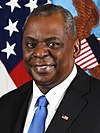 Lloyd Austin |
January 22, 2021 |
 Attorney General (28 U.S.C. § 503) |
 Merrick Garland |
March 11, 2021 |
 Secretary of the Interior (43 U.S.C. § 1451) |
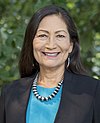 Deb Haaland |
March 16, 2021 |
 Secretary of Agriculture (7 U.S.C. § 2202) |
 Tom Vilsack |
February 24, 2021 |
 Secretary of Commerce (15 U.S.C. § 1501) |
 Gina Raimondo |
March 3, 2021 |
 Secretary of Labor (29 U.S.C. § 551) |
 Julie Su Acting |
March 11, 2023 |
 Secretary of Health and Human Services (Reorganization Plan No. 1 of 1953, 67 Stat. 631 and 42 U.S.C. § 3501) |
 Xavier Becerra |
March 19, 2021 |
 Secretary of Housing and Urban Development (42 U.S.C. § 3532) |
 Marcia Fudge |
March 10, 2021 |
 Secretary of Transportation (49 U.S.C. § 102) |
 Pete Buttigieg |
February 3, 2021 |
 Secretary of Energy (42 U.S.C. § 7131) |
 Jennifer Granholm |
February 25, 2021 |
 Secretary of Education (20 U.S.C. § 3411) |
 Miguel Cardona |
March 2, 2021 |
 Secretary of Veterans Affairs (38 U.S.C. § 303) |
 Denis McDonough |
February 9, 2021 |
 Secretary of Homeland Security (6 U.S.C. § 112) |
 Alejandro Mayorkas |
February 2, 2021 |
Cabinet-level officials[edit]
The president may designate additional positions to be members of the Cabinet, which can vary under each president. They are not in the line of succession and are not necessarily officers of the United States.[9]
| Office | Incumbent | Term began |
|---|---|---|
 Administrator of the Environmental Protection Agency (5 U.S.C. § 906, Executive Order 11735) |
 Michael S. Regan |
March 11, 2021 |
 Director of the Office of Management and Budget (31 U.S.C. § 502, Executive Order 11541, Executive Order 11609, Executive Order 11717) |
 Shalanda Young |
March 24, 2021 |
 Director of National Intelligence (50 U.S.C. § 3023) |
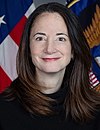 Avril Haines |
January 21, 2021 |
 Trade Representative (19 U.S.C. § 2171) |
 Katherine Tai |
March 18, 2021 |
 Ambassador to the United Nations (22 U.S.C. § 287) |
 Linda Thomas-Greenfield |
February 25, 2021 |
 Chair of the Council of Economic Advisers (15 U.S.C. § 1023) |
Vacant | March 31, 2023 |
 Administrator of the Small Business Administration (15 U.S.C. § 633) |
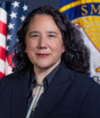 Isabel Guzman |
March 17, 2021 |
 Director of the Office of Science and Technology Policy (42 U.S.C. § 6612) |
 Arati Prabhakar |
October 3, 2022 |
 White House Chief of Staff (Pub. L. 76–19, 53 Stat. 561, enacted April 3, 1939, Executive Order 8248, Executive Order 10452, Executive Order 12608) |
 Jeff Zients |
February 7, 2023 |
Former executive and Cabinet-level departments[edit]
- Department of War (1789–1947), headed by the secretary of war: renamed Department of the Army by the National Security Act of 1947.
- Department of the Navy (1798–1949), headed by the secretary of the Navy: became a military department within the Department of Defense.
- Post Office Department (1829–1971), headed by the postmaster general: reorganized as the United States Postal Service, an independent agency.
- National Military Establishment (1947–1949), headed by the secretary of Defense: created by the National Security Act of 1947 and recreated as the Department of Defense in 1949.
- Department of the Army (1947–1949), headed by the secretary of the Army: became a military department within the Department of Defense.
- Department of the Air Force (1947–1949), headed by the secretary of the Air Force: became a military department within the Department of Defense.
Renamed heads of the executive departments[edit]
- Secretary of Foreign Affairs: created in July 1781 and renamed Secretary of State in September 1789.[10]
- Secretary of War: created in 1789 and was renamed as Secretary of the Army by the National Security Act of 1947. The 1949 Amendments to the National Security Act of 1947 made the secretary of the Army a subordinate to the secretary of defense.
- Secretary of Commerce and Labor: created in 1903 and renamed Secretary of Commerce in 1913 when its labor functions were transferred to the new secretary of labor.
- Secretary of Health, Education, and Welfare: created in 1953 and renamed Secretary of Health and Human Services in 1979 when its education functions were transferred to the new secretary of education.
Positions intermittently elevated to Cabinet-rank[edit]
- Ambassador to the United Nations (1953–1989, 1993–2001, 2009–2018, 2021–present)
- Director of the Office of Management and Budget (1953–1961, 1969–present)
- White House Chief of Staff (1953–1961, 1974–1977, 1993–present)
- Counselor to the President (1969–1977, 1981–1985, 1992–1993): A title used by high-ranking political advisers to the president of the United States and senior members of the Executive Office of the President since the Nixon administration.[11] Incumbents with Cabinet rank included Daniel Patrick Moynihan, Donald Rumsfeld and Anne Armstrong.
- White House Counsel (1974–1977)
- United States Trade Representative (1975–present)
- Chair of the Council of Economic Advisers (1977–1981, 1993–2001, 2009–2017, 2021–present)
- National Security Advisor (1977–1981)
- Director of Central Intelligence (1981–1989, 1995–2001)[12][13][14]
- Administrator of the Environmental Protection Agency (1993–present)
- Director of the Office of National Drug Control Policy (1993–2009)[15][16]
- Administrator of the Small Business Administration (1994–2001, 2012–present)
- Director of the Federal Emergency Management Agency (1996–2001): Created as an independent agency in 1979, raised to Cabinet rank in 1996,[17] and dropped from Cabinet rank in 2001.[18]
- Director of National Intelligence (2017–present)
- Director of the Central Intelligence Agency (2017–2021)
- Director of the Office of Science and Technology Policy (2021–present)
Proposed Cabinet departments[edit]
- Department of Industry and Commerce, proposed by Secretary of the Treasury William Windom in a speech given at a Chamber of Commerce dinner in May 1881.[19]
- Department of Natural Resources, proposed by the Eisenhower administration,[20] President Richard Nixon,[21] the 1976 GOP national platform,[22] and by Bill Daley (as a consolidation of the Departments of the Interior and Energy, and the Environmental Protection Agency).[23]
- Department of Peace, proposed by Senator Matthew Neely in the 1930s, Congressman Dennis Kucinich, 2020 presidential candidate Marianne Williamson, and other members of the U.S. Congress.[24][25]
- Department of Social Welfare, proposed by President Franklin Roosevelt in January 1937.[26]
- Department of Public Works, proposed by President Franklin Roosevelt in January 1937.[26]
- Department of Conservation (renamed Department of the Interior), proposed by President Franklin Roosevelt in January 1937.[26]
- Department of Urban Affairs and Housing, proposed by President John F. Kennedy.[27]
- Department of Business and Labor, proposed by President Lyndon Johnson.[28]
- Department of Community Development, proposed by President Richard Nixon; to be chiefly concerned with rural infrastructure development.[21][29]
- Department of Human Resources, proposed by President Richard Nixon; essentially a revised Department of Health, Education, and Welfare.[21]
- Department of Economic Affairs, proposed by President Richard Nixon; essentially a consolidation of the Departments of Commerce, Labor, and Agriculture.[30]
- Department of Environmental Protection, proposed by Senator Arlen Specter and others.[31]
- Department of Intelligence, proposed by former Director of National Intelligence Mike McConnell.[32]
- Department of Global Development, proposed by the Center for Global Development.[33]
- Department of Art, proposed by Quincy Jones.[34]
- Department of Business, proposed by President Barack Obama as a consolidation of the U.S. Department of Commerce’s core business and trade functions, the Small Business Administration, the Office of the U.S. Trade Representative, the Export-Import Bank, the Overseas Private Investment Corporation, and the U.S. Trade and Development Agency.[35][36]
- Department of Education and the Workforce, proposed by President Donald Trump as a consolidation of the Departments of Education and Labor.[37]
- Department of Health and Public Welfare, proposed by President Donald Trump as a renamed Department of Health and Human Services.[38]
- Department of Economic Development, proposed by Senator Elizabeth Warren to replace the Commerce Department, subsume other agencies like the Small Business Administration and the Patent and Trademark Office, and include research and development programs, worker training programs, and export and trade authorities like the Office of the U.S. Trade Representative with the single goal of creating and protecting American jobs.[39]
- Department of Technology, proposed by businessman and 2020 Democratic presidential candidate Andrew Yang.[40]
- Department of Culture, patterned on similar departments in many foreign nations, proposed by, among others, Murray Moss[41] and Jeva Lange.[42]
See also[edit]
- Black Cabinet
- Brain trust
- Cabinet of Joe Biden
- Cabinet of the Confederate States of America
- Kitchen Cabinet
- List of African-American United States Cabinet members
- List of Hispanic and Latino American United States Cabinet members
- List of female United States Cabinet members
- List of foreign-born United States Cabinet members
- List of people who have held multiple United States Cabinet-level positions
- List of United States Cabinet members who have served more than eight years
- List of United States political appointments that crossed party lines
- St. Wapniacl (historical mnemonic acronym)
- Unsuccessful nominations to the Cabinet of the United States
References[edit]
- ^ «Cabinet Room—White House Museum». www.whitehousemuseum.org. Retrieved March 17, 2021.
- ^ Prakash, Sai. «Essays on Article II:Executive Vesting Clause». The Heritage Guide to The Constitution. The Heritage Foundation. Archived from the original on July 1, 2018. Retrieved July 3, 2018.
- ^ a b Gaziano, Todd. «Essays on Article II: Opinion Clause». The Heritage Guide to The Constitution. The Heritage Foundation. Archived from the original on July 1, 2018. Retrieved July 3, 2018.
- ^ «John Adams · George Washington’s Mount Vernon». Archived from the original on May 17, 2018. Retrieved May 17, 2018.
- ^ Wulwick, Richard P.; Macchiarola, Frank J. (1995). «Congressional Interference With The President’s Power To Appoint» (PDF). Stetson Law Review. XXIV: 625–652. Archived (PDF) from the original on November 16, 2016. Retrieved November 15, 2016.
- ^ Pierce, Olga (January 22, 2009). «Who Runs Departments Before Heads Are Confirmed?». ProPublica. Archived from the original on February 2, 2017. Retrieved January 20, 2017.
- ^ Obama, Barack (December 19, 2014). «Adjustments of Certain Rates of Pay» (PDF). Executive Order 13686. The White House. Archived (PDF) from the original on February 1, 2017. Retrieved September 18, 2015.
- ^ Purcell, Patrick J. (January 21, 2005). «Retirement Benefits for Members of Congress» (PDF). CRS Report for Congress. Congressional Research Service. Archived (PDF) from the original on January 3, 2018. Retrieved February 19, 2017.
- ^ The White House. «The Cabinet». Retrieved February 6, 2021.
- ^ The office of Secretary of Foreign Affairs existed under the Articles of Confederation from October 20, 1781, to March 3, 1789, the day before the Constitution came into force.
- ^ «Clayton Yeutter’s Obituary». The Washington Post. Archived from the original on December 31, 2018.
- ^ Tenet, George (2007). At the Center of the Storm. London: HarperCollins. p. 136. ISBN 978-0-06-114778-4.
Under President Clinton, I was a Cabinet member—a legacy of John Deutch’s requirement when he took the job as DCI—but my contacts with the president, while always interesting, were sporadic. I could see him as often as I wanted but was not on a regular schedule. Under President Bush, the DCI lost its Cabinet-level status.
- ^ Schoenfeld, Gabriel (July–August 2007). «The CIA Follies (Cont’d.)». Commentary. Retrieved May 22, 2009.
Though he was to lose the Cabinet rank he had enjoyed under Clinton, he came to enjoy «extraordinary access» to the new President, who made it plain that he wanted to be briefed every day.
[permanent dead link] - ^ Sciolino, Elaine (September 29, 1996). «C.I.A. Chief Charts His Own Course». New York Times. Archived from the original on May 30, 2013. Retrieved May 22, 2009.
It is no secret that Mr. Deutch initially turned down the intelligence position, and was rewarded for taking it by getting Cabinet rank.
- ^ Clinton, Bill (July 1, 1993). «Remarks by the President and Lee Brown, Director of Office of National Drug Control Policy». White House. Archived from the original on July 21, 2011. Retrieved May 22, 2009.
We are here today to install a uniquely qualified person to lead our nation’s effort in the fight against illegal drugs and what they do to our children, to our streets, and to our communities. And to do it for the first time from a position sitting in the President’s Cabinet.
- ^ Cook, Dave (March 11, 2009). «New drug czar gets lower rank, promise of higher visibility». Christian Science Monitor. Archived from the original on March 15, 2009. Retrieved March 16, 2009.
For one thing, in the Obama administration the Drug Czar will not have Cabinet status, as the job did during George W. Bush’s administration.
- ^ «President Clinton Raises FEMA Director to Cabinet Status» (Press release). Federal Emergency Management Agency. February 26, 1996. Archived from the original on January 16, 1997. Retrieved May 22, 2009.
- ^ Fowler, Daniel (November 19, 2008). «Emergency Managers Make It Official: They Want FEMA Out of DHS». CQ Politics. Archived from the original on November 29, 2008. Retrieved March 3, 2010.
During the Clinton administration, FEMA Administrator James Lee Witt met with the Cabinet. His successor in the Bush administration, Joe M. Allbaugh, did not.
(Archived March 3, 2010, by WebCite at - ^ «A Department of Commerce». The New York Times. May 13, 1881.
- ^ Improving Management and Organization in Federal Natural Resources and Environmental Functions: Hearing Before the Committee on Governmental Affairs, U. S. Senate. Diane Publishing. April 1, 1998. ISBN 9780788148743. Archived from the original on January 14, 2019. Retrieved February 20, 2017 – via Google Books.
Chairman Stevens. Thank you very much. I think both of you are really pointing in the same direction as this Committee. I do hope we can keep it on a bipartisan basis. Mr. Dean, when I was at the Interior Department, I drafted Eisenhower’s Department of Natural Resources proposal, and we have had a series of them that have been presented.
- ^ a b c «116—Special Message to the Congress on Executive Branch Reorganization». The University of California, Santa Barbara—The American Presidency Project. Archived from the original on February 14, 2017. Retrieved February 13, 2017.
The administration is today transmitting to the Congress four bills which, if enacted, would replace seven of the present executive departments and several other agencies with four new departments: the Department of Natural Resources, the Department of Community Development, the Department of Human Resources and the Department of Economic Affairs.
- ^ «Republican Party Platform of 1976». The University of California, Santa Barbara—The American Presidency Project. August 18, 1976. Archived from the original on April 2, 2015. Retrieved March 13, 2015.
- ^ Thrush, Glenn (November 8, 2013). «Locked in the Cabinet». Politico. Archived from the original on November 17, 2013. Retrieved November 18, 2013.
- ^ Schuman, Frederick L. (1969). Why a Department of Peace. Beverly Hills: Another Mother for Peace. p. 56. OCLC 339785.
- ^ «History of Legislation to Create a Dept. of Peace». Archived from the original on July 20, 2006.
- ^ a b c «10—Summary of the Report of the Committee on Administrative Management». The University of California, Santa Barbara—The American Presidency Project. Archived from the original on February 13, 2017. Retrieved February 13, 2017.
Overhaul the more than 100 separate departments, boards, commissions, administrations, authorities, corporations, committees, agencies and activities which are now parts of the Executive Branch, and theoretically under the President, and consolidate them within twelve regular departments, which would include the existing ten departments and two new departments, a Department of Social Welfare, and a Department of Public Works. Change the name of the Department of Interior to Department of Conservation.
- ^ «23—Special Message to the Congress Transmitting Reorganization Plan 1 of 1962». The University of California, Santa Barbara—The American Presidency Project. Archived from the original on February 14, 2017. Retrieved February 13, 2017.
- ^ «121–Special Message to the Congress: The Quality of American Government». The University of California, Santa Barbara—The American Presidency Project. Archived from the original on February 14, 2017. Retrieved February 13, 2017.
In my State of the Union Address, and later in my Budget and Economic Messages to the Congress, I proposed the creation of a new Department of Business and Labor.
- ^ «33—Special Message to the Congress on Rural Development». The University of California, Santa Barbara—The American Presidency Project. Archived from the original on February 14, 2017. Retrieved February 13, 2017.
- ^ «116—Special Message to the Congress on Executive Branch Reorganization». The University of California, Santa Barbara—The American Presidency Project. Archived from the original on February 14, 2017. Retrieved February 13, 2017.
The new Department of Economic Affairs would include many of the offices that are now within the Departments of Commerce, Labor and Agriculture. A large part of the Department of Transportation would also be relocated here, including the United States Coast Guard, the Federal Railroad Administration, the St. Lawrence Seaway Development Corporation, the National Transportation Safety Board, the Transportation Systems Center, the Federal Aviation Administration, the Motor Carrier Safety Bureau and most of the National Highway Traffic Safety Administration. The Small Business Administration, the Science Information Exchange program from the Smithsonian Institution, the National Institute for Occupational Health and Safety from the Department of Health, Education, and Welfare and the Office of Technology Utilization from the National Aeronautics and Space Administration would also be included in the new Department.
- ^ «Public Notes on 02-RMSP3». Archived from the original on June 13, 2017. Retrieved February 20, 2017.
- ^ «A Conversation with Michael McConnell». Council on Foreign Relations (Federal News Service, rush transcript). June 29, 2007. Archived from the original on January 17, 2013. Retrieved January 9, 2013.
- ^ «Time for a Cabinet-Level U.S. Department of Global Development». The Center for Global Development. Archived from the original on January 14, 2019. Retrieved February 15, 2017.
- ^ Clarke, Jr., John (January 16, 2009). «Quincy Jones Lobbies Obama for Secretary of Culture Post». Rolling Stone. Archived from the original on September 8, 2012. Retrieved August 19, 2010.
{{cite magazine}}: CS1 maint: multiple names: authors list (link) - ^ «President Obama Announces proposal to reform, reorganize and consolidate Government». whitehouse.gov. Archived from the original on February 11, 2017. Retrieved February 8, 2017 – via National Archives.
- ^ «Obama Suggests ‘Secretary of Business’ in a 2nd Term—Washington Wire—WSJ». The Wall Street Journal. Archived from the original on March 1, 2017. Retrieved August 4, 2017.
- ^ «White House Proposes Merging Education And Labor Departments». NPR.org. Archived from the original on June 21, 2018. Retrieved June 22, 2018.
- ^ «Delivering Government Solutions in the 21st Century | Reform Plan and Reorganization Recommendations» (PDF). whitehouse.gov. 2018. Archived (PDF) from the original on April 12, 2019.
- ^ Warren, Team (June 4, 2019). «A Plan For Economic Patriotism». Medium. Archived from the original on July 31, 2019. Retrieved July 30, 2019.
- ^ «Regulate AI and other Emerging Technologies». Andrew Yang for President. Archived from the original on August 20, 2019. Retrieved August 21, 2019.
- ^ Garber, Megan (July 1, 2013). «Should the U.S. Have a Secretary of Culture?». The Atlantic. Retrieved January 22, 2021.
- ^ «Hey Joe—appoint a culture secretary». theweek.com. November 16, 2020. Retrieved January 22, 2021.
Further reading[edit]
- Bennett, Anthony. The American President’s Cabinet. Houndmills, Basingstoke, Hampshire: Macmillan, 1996. ISBN 0-333-60691-4. A study of the U.S. Cabinet from Kennedy to Clinton.
- Grossman, Mark. Encyclopedia of the United States Cabinet (Santa Barbara, California: ABC-CLIO; three volumes, 2000; reprint, New York: Greyhouse Publishing; two volumes, 2010). A history of the United States and Confederate States Cabinets, their secretaries, and their departments.
- Rudalevige, Andrew. «The President and the Cabinet», in Michael Nelson, ed., The Presidency and the Political System, 8th ed. (Washington, D.C.: CQ Press, 2006).
External links[edit]
- Official site of the President’s Cabinet
- U.S. Senate’s list of Cabinet members who did not attend the State of the Union Address (since 1984)
Дональд Трамп назвал имена членов команды, которая придет на смену администрации Барака Обамы. Однако, чтобы получить официальное назначение, некоторым из предложенных кандидатов еще необходимо заручиться одобрением сената
Должностные лица в ранге министров, не входящие в кабинет
Остальные должностные лица
Биографии членов команды Дональда Трампа
Майк Пенс
Вице-президент
Назначен на должность 20 января 2017 года
Возраст: 58 лет
Образование: Ганноверский колледж, Индианский университет, изучал американскую историю и право
Майк Пенс занимал пост губернатора штата Индиана c 2013 по 2017 год. Известен своими ультраконсервативными взглядами и резкими высказываниями в адрес России. В Конгрессе Пенс голосовал за вторжение в Ирак, против закрытия тюрьмы в Гуантанамо и легализации однополых браков. При нем в Индиане ужесточили ответственность за аборты. Выступает с критикой политики Барака Обамы
Вернуться
Сонни Пердью
Министр сельского хозяйства
Утвержден на должность 25 апреля 2017 года
Возраст: 70 лет
Образование: университет Джорджии, изучал ветеринарную медицину
Сонни Пердью занимал должность губернатора Джорджии с 2003 по 2011 год. На этом посту он проводил налоговые реформы в пользу местных фермеров. После выхода в отставку Пердью основал фирму, консультирующую компании-экспортеры
Вернуться
Бетси Девос
Министр образования
Утверждена на должность 7 февраля 2017 года
Возраст: 59 лет
Образование: колледж Кальвина, изучала деловое администрирование и политологию
Бывший бизнесмен и миллиардер Бетси Девос активно занималась благотворительностью и защитой прав в области образования. Поддерживает идею так называемой ваучерной программы, согласно которой финансирование государственных школ распределяется между родителями в виде сертификатов. Является невесткой основателя компании Amway Ричарда Девоса
Вернуться
Дэвид Шулкин
Министр по делам ветеранов
Утвержден на должность 14 февраля 2017 года
Возраст: 58 лет
Образование: Университет Дрексела, Питтсбургский университет, Йельский университет, изучал медицину
Врач, профессор медицины, Дэвид Шулкин в 2015 году был назначен на должность заместителя министра по делам ветеранов. Ранее он возглавлял медицинский центр в Морристауне, а также Атлантический институт реабилитации
Вернуться
Элейн Дьюк
Врио министра внутренней безопасности
Назначена на должность 31 июля 2017 года
Возраст: 59 лет
Образование: Университет Саузерн Нью-Хэмпшир, Университет Чаминейд в Гонулулу, изучала управление бизнесом
Элейн Дьюк работала в Администрации транспортной безопасности и Министерстве обороны США. С 2008 по 2010 год она занимала должность заместителя государственного секретаря по вопросам управления. Возглавляла собственную консалтинговую компанию Elaine Duke & Associates, LLC
Вернуться
Рик Перри
Министр энергетики
Утвержден на должность 2 марта 2017 года
Возраст: 67 лет
Образование: Техасский сельскохозяйственно-машиностроительный университет, изучал животноводство
Рик Перри занимал пост губернатора штата Техас с 2000 по 2015 год. Входит в правление корпорации Energy Transfer Partners и имеет непосредственное отношение к Sunoco. Обе компании занимаются строительством нефтепроводов. Его состояние оценивается в 2 миллиона долларов
Вернуться
Элейн Чао
Министр транспорта
Утверждена на должность 31 января 2017 года
Возраст: 64 года
Образование: колледж Маунт Холиок, Гарвардский университет, изучала экономику и деловое администрирование
Элейн Чао с 2001 по 2009 год занимала пост министра труда в администрации Джорджа Буша. Кроме того, она была заместителем министра транспорта США в 1989-1991 годах. Родилась на Тайване, переехала в США в возрасте восьми лет. Является супругой лидера республиканского большинства в сенате США Митча Макконнелла
Вернуться
Уилбур Росс
Министр торговли
Утвержден на должность 28 февраля 2017 года
Возраст: 79 лет
Образование: Йельский университет, Гарвардский университет, изучал гуманитарные науки и деловое администрирование
Уилбур Росс — крупный банкир и инвестор. Известен как «король банкротства», благодаря своему опыту реструктуризации проблемных компаний. Под началом президента Билла Клинтона работал в Инвестиционном фонде США-Россия. Журнал Forbes называет его в числе богатейших людей мира. Его чистое состояние оценивается в 2,9 миллиарда долларов
Вернуться
Бен Карсон
Министр жилищного строительства и городского развития
Утвержден на должность 2 марта 2017 года
Возраст: 65 лет
Образование: Йельский университет, Мичиганский университет, изучал медицину
Знаменитый нейрохирург и писатель. Первым в мире разделил сросшихся затылками сиамских близнецов. Бен Карсон посвятил карьере врача 36 лет, завершив ее в 2013 году. Сторонник запрета абортов, противник однополых браков и ассигнований на борьбу с изменением климата. Карсон заявлял о намерении баллотироваться в президенты США, однако в марте 2016 года вышел из президентской гонки и призвал своих избирателей голосовать за Дональда Трампа
Вернуться
Том Прайс
Министр здравоохранения и социального обеспечения
Утвержден на должность 10 февраля 2017 года
Возраст: 62 года
Образование: Мичиганский университет, изучал медицину
Том Прайс, будучи хирургом-ортопедом, в течение 20 лет возглавлял медицинскую клинику в Атланте. В 2005 году он вошел в палату представителей Конгресса США от штата Джорджия. Выступает с резкой критикой реформы здравоохранения Obamacare
Вернуться
Рекс Тиллерсон
Руководитель государственного департамента США
Утвержден на должность 1 февраля 2017 года
Возраст: 65 лет
Образование: Техасский университет в Остине, изучал инженерное дело
Рекс Тиллерсон возглавляет крупнейшую частную нефтяную корпорацию ExxonMobil. В 1998 году он занял пост вице-президента компании Exxon Ventures. Бизнесмена хорошо знают в России. Он неоднократно встречался с Владимиром Путиным, а в 2013 году получил из его рук Орден Дружбы «за большой вклад в развитие и укрепление сотрудничества с Российской Федерацией»
Вернуться
Райан Зинке
Министр внутренних дел
Утвержден на должность 1 марта 2017 года
Возраст: 55 лет
Образование: Орегонский университет, изучал геологию
Райан Зинке — бывший военный, служил в спецподразделении ВМС США “Морские котики”. Принимал участие в операциях в Ираке, имеет на счету две Бронзовые звезды. Конгрессмен палаты представителей от штата Монтана. Поддерживал идеи расширения налоговых льгот для угольных электростанций и ограничения федерального управления землями
Вернуться
Александр Акоста
Министр труда
Утвержден на должность 28 апреля 2017 года
Возраст: 48 лет
Образование: Гарвардский университет, изучал экономику и право
Александр Акоста — декан института права Международного университета Флориды. Работал в федеральном апелляционном суде в Пенсильвании. С 2013 года занимает пост председателя совета правления локального банка U.S. Century Bank во Флориде. Кроме того, Акоста был членом Национального совета по трудовым отношениям, помощником генпрокурора США по вопросам гражданских прав в администрации Джорджа Буша-младшего и прокурором по Южному округу Флориды
Вернуться
Стивен Мнучин
Министр финансов
Утвержден на должность 13 февраля 2017 года
Возраст: 54 года
Образование: Йельский университет, изучал экономику
Экс-банкир Goldman Sachs Стивен Мнучин занимал пост финансового директора избирательной кампании Дональда Трампа. В 2007 году он занялся продюсированием голливудских фильмов, основав такие компании, как Dune Capital Management, OneWest Bank Group, а также RatPac-Dune Entertainment, среди проектов которой — фильмы франшизы «Люди Икс», «Аватар», «Снайпер» и «Безумный Макс: Дорога ярости»
Вернуться
Джеймс Мэттис
Министр обороны
Утвержден на должность 20 января 2017 года
Возраст: 66 лет
Образование: Центральный университет Вашингтона, изучал историю
Джеймс Мэттис с 1969 года служил в морской пехоте, имеет звание четырехзвездного генерала. В 1990-1991 годах участвовал в операции «Буря в пустыне», а также в военных операциях в Афганистане и Ираке. С 2010 года до отставки в 2013 году возглавлял Центральное командование ВС США. Известен под прозвищами «Бешеный пес» и «Воин-монах». Настороженно относится к России, выступает за разрыв ядерного соглашения с Тегераном, поддерживает идею о поставках оружия сирийской оппозиции
Вернуться
Джефф Сешнс
Генеральный прокурор
Утвержден на должность 9 февраля 2017 года
Возраст: 70 лет
Образование: Хантингдон-колледж, Алабамский университет, изучал право
Бывший федеральный прокурор, затем генеральный прокурор штата Алабама. Джефф Сэшнс считается одним из самых консервативных американских сенаторов. Верный сторонник Дональда Трампа, поддержавший его одним из первых. В ходе предвыборной кампании консультировал кандидата в президенты по вопросам миграционной политики и национальной безопасности
Вернуться
Джон Келли
Глава аппарата Белого дома
Назначен 31 июля 2017 года
Возраст: 67 лет
Образование: Массачусетский университет в Бостоне, Джорджтаунский университет, изучал проблемы национальной безопасности
Джон Келли – бывший глава Южного командования армии США. Выступал против планов по закрытию тюрьмы Гуантанамо, также высказывал обеспокоенность, когда Пентагон разрешил женщинам претендовать на любые должности в войсках США.
Вернуться
Мик Малвани
Директор Административно-бюджетного управления
Утвержден на должность 16 февраля 2017 года
Возраст: 50 лет
Образование: Джорджтаунский университет, Университет Северной Каролины в Чапел-Хилл, изучал экономику и право
Мик Малвани — действующий член палаты представителей США. До того как начать политическую карьеру, он несколько лет занимался юридической практикой в компании James, McElroy & Diehl. Придерживается консервативных взглядов в вопросах финансов и выступает за сокращение федеральных расходов
Вернуться
Никки Хейли
Постоянный представитель США при ООН
Утверждена на должность 24 января 2017 года
Возраст: 45 лет
Образование: Клемсонский университет, изучала бухгалтерский учет
Никки Хейли с 2011 по 2017 год занимала должность губернатора штата Южная Каролина. Во время предвыборной кампании выступала против Дональда Трампа, осуждая его предложение о запрете иммиграции мусульман в США. Поддерживает законопроекты, ограничивающие аборты. Родилась в семье иммигрантов из Индии
Вернуться
Линда Макмэн
Администратор Управления по делам малого бизнеса
Утверждена на должность 14 февраля 2017 года
Возраст: 68 лет
Образование: Восточно-Каролинский университет, изучала французскую лингвистику
Линда Макмэн долгое время занимала руководящие посты в компании World Wrestling Entertainment (WWE). Сейчас во главе компании находится ее супруг Винс Макмэн. В 2010 году Макмэн претендовала на пост сенатора от штата Коннектикут, но уступила кресло сопернику от Демократической партии. С Дональдом Трампом ее связывают дружеские отношения
Вернуться
Скотт Прюитт
Администратор Агентства по охране окружающей среды
Утвержден на должность 17 февраля 2017 года
Возраст: 49 лет
Образование: Джорджтаунский колледж, Университет Талсы, изучал политологию и право
Скотт Прюитт занимает пост генерального прокурора штата Оклахома. Он выступает против мер по сокращению объемов выбросов углеводорода в атмосферу, принятых администрацией Барака Обамы. Призывает отменить Парижское соглашение по климату
Вернуться
Роберт Лайтизер
Торговый представитель
Утвержден на должность 15 мая 2017 года
Возраст: 69 лет
Образование: Джорджтаунский университет, изучал право
Роберт Лайтизер занимал пост заместителя торгового представителя США в администрации Рональда Рейгана. Придерживается протекционистских взглядов и призывает к ужесточению позиции в торговле с Китаем
Вернуться
Кевин Хассет
Председатель Совета экономических консультантов
Требуется согласование сената
Возраст: н/д
Образование: Суортмор-колледж, Пенсильванский университет, изучал экономику
Кевин Хассет — известный экономист, эксперт в области налоговых вопросов. Придерживается мнения, что приток мигрантов в страну положительно отражается на состоянии экономики. Возглавляет кафедру экономической политики в Американском институте предпринимательства. Работал советником сенаторов Джона Маккейна и Митта Ромни
Вернуться
Сара Сандерс
Пресс-секретарь
Назначена на должность 21 июля 2017 года
Возраст: 34 года
Образование: Баптистский университет Уачита в Аркадельфии
Сара Сандерс – дочь бывшего губернатора Арканзаса Майка Хакаби. Начала политическую карьеру, работая координатором на выборах губернатора Арканзаса в 2002 году. Занимала должности политического директора президентской кампании собственного отца, советника Тима Поленти во время президентских выборов в 2011 году и Дональда Трампа в 2016. После победы Трампа Сандерс назначили заместителем пресс-секретаря Белого дома
Вернуться
Джаред Кушнер
Старший советник
Назначен на должность 20 января 2017 года
Возраст: 36 лет
Образование: Гарвардский университет, школа права Нью-Йоркского университета, школа бизнеса Леонарда Н. Штерна, изучал государственное управление и управление бизнесом
Джаред Кушнер — cупруг дочери Дональда Трампа, Иванки. Он активно занимается бизнесом на рынке недвижимости в Нью-Йорке. Владеет девелоперской компанией Kushner Companies, которую унаследовал от отца Чарльза Кушнера, и газетой New York Observer
Вернуться
Келлиэнн Конуэй
Второй советник
Назначена на должность 20 января 2017 года
Возраст: 50 лет
Образование: Университет Тринити в Вашингтоне, Университет Джорджа Вашингтона, изучала политологию и право
Во время предвыборной кампании Келлиэнн Конуэй работала с сенатором Тедом Крузом, но после того, как он выбыл из гонки, она возглавила штаб Дональда Трампа. Является основательницей компании по изучению общественного мнения The Polling Company. Выступает против абортов и поддерживает иммиграционную реформу
Вернуться
Стивен Бэннон
Главный советник по стратегическим вопросам
Назначен на должность 20 января 2017 года
Возраст: 63 года
Образование: Политехнический университет Виргинии, Джорджтаунский университет, Гарвардская школа бизнеса, изучал городское планирование, проблемы национальной безопасности и деловое администрирование
Стивен Бэннон работал в банке Goldman Sachs. На сегодняшний день владеет собственным инвестиционным банком. Бэннон — сценарист в Голливуде, кинопродюсер и издатель самого популярного среди американских правых веб-сайта Breitbart News. Его считают одним из идеологов указа Дональда Трампа о мигрантах из семи мусульманских стран
Вернуться
Герберт Макмастер
Советник по национальной безопасности
Назначен на должность 20 февраля 2017 года
Возраст: 55 лет
Образование: Военная академия Вэлли-Фордж, Военная академия США, Университет Северной Каролины в Чапел-Хилл, изучал военное дело и историю
Герберт Макмастер служил в группе американских войск в Германии и на Ближнем Востоке. За участие в операции «Буря в пустыне» в Ираке он был награжден Серебряной звездой. Принимал участие в операциях в Афганистане. Позднее отвечал за вопросы подготовки, развития и координации в командовании сухопутных сил США. С 2014 года возглавлял Центр интеграционных возможностей сухопутных войск США
Вернуться
Томас Боссерт
Советник по внутренней безопасности
Назначен на должность 20 января 2017 года
Возраст: 41 год
Образование: Питтсбургский университет, Университет Джорджа Вашингтона, изучал политологию и экономику
Томас Боссерт занимал пост заместителя советника президента по внутренней безопасности при администрации Джорджа Буша-младшего. Являлся экспертом Атлантического совета по противостоянию киберугрозам. Возглавляет консалтинговую компанию Civil Defense Solutions, специализирующуюся на вопросах кибербезопасности
Вернуться
Дональд Макган
Советник по юридическим вопросам
Назначен на должность 20 января 2017 года
Возраст: 49 лет
Образование: Военно-морская академия, Университет Нотр-Дам, Университет Уиденер, Джорджтаунский университет, изучал военное дело, историю, программирование и право
Дональд Макган работал юридическим консультантом президентской кампании Дональда Трампа. Считается одной из самых влиятельных фигур в его окружении
Вернуться
Гари Кон
Директор Национального экономического совета
Назначен на должность 20 января 2017 года
Возраст: 56 лет
Образование: Американский университет
Гари Кон является исполнительным директором и президентом крупнейшего инвестиционного банка Goldman Sachs. Его состояние оценивается в 266 миллионов долларов
Вернуться
Питер Наварро
Директор Национального совета по торговле
Назначен на должность 20 января 2017 года
Возраст: 68 лет
Образование: Гарвардский университет, Университет Тафтса, изучал государственное управление и экономику
Питер Наварро — профессор экономики в Колумбийском университете. Занимал должность политического консультанта президентской кампании Дональда Трампа. Выступает с критикой политики США на китайском направлении
Вернуться
Рудольф Джулиани
Советник по кибербезопасности
Назначен на должность 20 января 2017 года
Возраст: 73 года
Образование: Нью-Йоркский университет, изучал право
В 1993 году Рудольф Джулиани стал вторым в истории республиканцем, возглавившим мэрию Нью-Йорка. На посту мэра он принимал активные меры по борьбе с преступностью, безработицей, проводил эффективную бюджетную политику и реализовал многочисленные детские программы. Мировую известность Джулиани приобрел после терактов 11 сентября 2001 года, когда участвовал в организации спасательных работ
Вернуться
Энтони Скарамуччи
Экс-директор по коммуникациям Белого дома
Снят с должности 31 июля 2017 года
Возраст: 53 года
Образование: Школа права Гарвардского университета, Университет Тафтса, изучал экономику и право
Энтони Скарамуччи занимается управлением хедж-фондов. Свою карьеру он начинал в инвестиционной группе Goldman Sachs. В 2005 году основал собственную фирму SkyBridge Capital. Перед тем как присоединиться к избирательному штабу Дональда Трампа Скарамуччи успел поработать с двумя другими кандидатами в президенты от Республиканской партии — Скоттом Уокером и Джебом Бушем
Вернуться
Стивен Миллер
Старший советник по вопросам политики
Назначен на должность 20 января 2017 года
Возраст: 31 год
Образование: Университет Дьюка, изучал политологию
Стивен Миллер — cпичрайтер Дональда Трампа. Имеет опыт работы в Конгрессе США. Он был помощником ряда парламентариев, в том числе сенатора Джеффа Сешнса
Вернуться
Карл Айкан
Специальный советник по вопросам, связанным с регулятивной реформой
Назначен на должность 20 января 2017 года
Возраст: 81 год
Образование: Принстонский университет, Нью-Йоркский университет, изучал философию и медицину
Карл Айкан считается одним из самых богатых людей в мире. В 2014 году журнал Forbes оценивал его состояние в 24,5 миллиарда долларов. Известен как успешный корпоративный рейдер и специалист по враждебным поглощениям
Вернуться
Дэн Коутс
Директор Национальной разведки
Утвержден на должность 16 марта 2017 года
Возраст: 74 года
Образование: Индианский университет, изучал право
Дэн Коутс с 2001 по 2005 год являлся послом США в Германии. В сенате представляет штат Индиана. Его имя включено в российский список американцев, которым запрещен въезд в Россию из-за поддержки введения санкций против российских граждан и компаний
Вернуться
Майк Помпео
Директор Центрального Разведывательного Управления
Утвержден на должность 23 января 2017 года
Возраст: 53 года
Образование: Военная академия США, Гарвардский университет, изучал военное дело и право
Последние шесть лет Майк Помпео представлял в Конгрессе штат Канзас. В палате представителей работал в спецкомитете по разведке и в комитете по энергетике и торговле. Кроме того, он был членом спецкомиссии по расследованию теракта в ливийском Бенгази в сентябре 2012 года. Демонстрирует жесткую позицию по отношению к России. Выступает против заключения ядерной сделки с Ираном. Активно занимался бизнесом, в том числе в сфере нефтяной промышленности
Вернуться
Источники: economist.com, washingtonpost.com, nytimes.com, equilar.com, bloomberg.com, votesmart.org, ria.ru
The Cabinet’s role is to advise the President on any subject he or she may require relating to the duties of each member’s respective office.
President Joe Biden’s Cabinet includes Vice President Kamala Harris and the heads of the 15 executive departments — the Secretaries of Agriculture, Commerce, Defense, Education, Energy, Health and Human Services, Homeland Security, Housing and Urban Development, Interior, Labor, State, Transportation, Treasury, and Veterans Affairs, and the Attorney General. Additionally, the Cabinet includes the White House Chief of Staff, the US Ambassador to the United Nations, the Director of National Intelligence, and the US Trade Representative, as well as the heads of the Environmental Protection Agency, Office of Management and Budget, Council of Economic Advisers, Office of Science and Technology Policy, and Small Business Administration.
President Biden’s Cabinet reflects his pledge to appoint leaders of government agencies that reflect the country they aim to serve.
In order of succession to the Presidency:
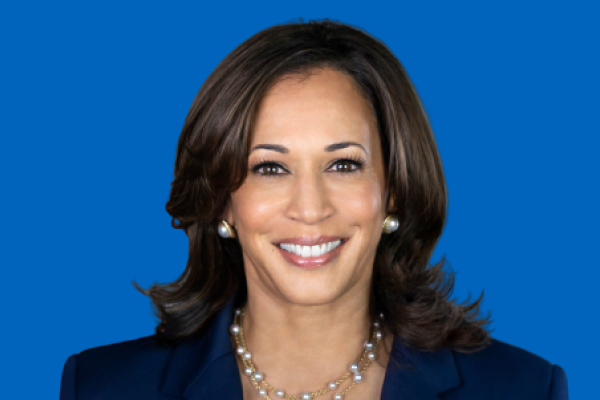
Kamala Harris
Vice President
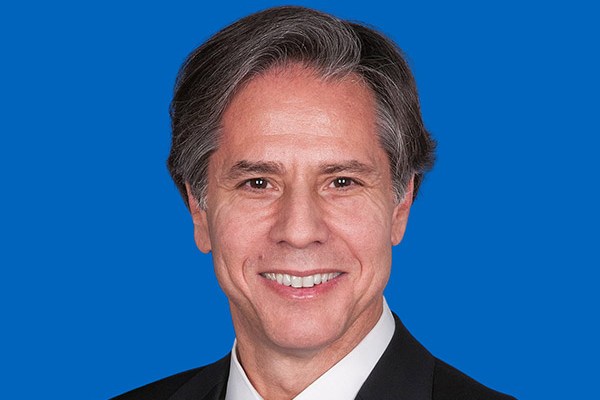
Antony Blinken
Secretary of State
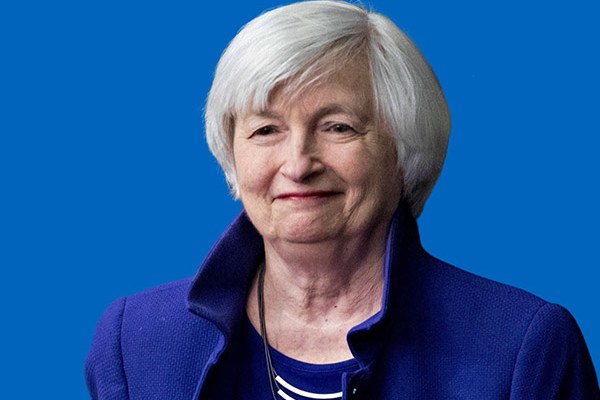
Dr. Janet Yellen
Secretary of the Treasury
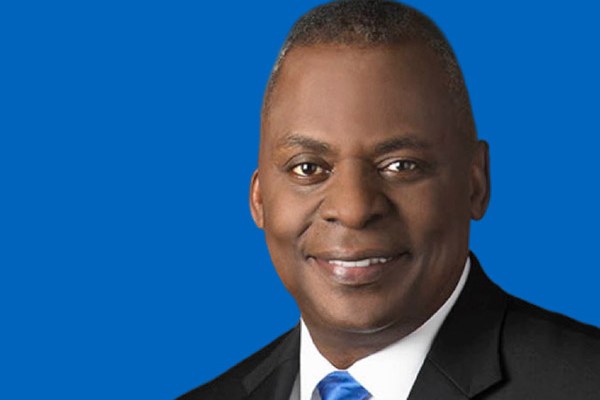
Lloyd Austin
Secretary of Defense
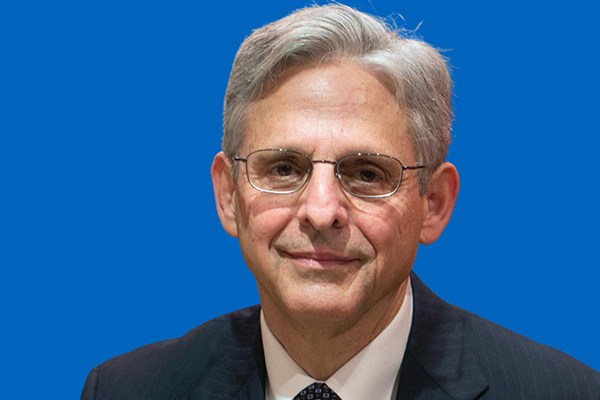
Merrick Garland
Attorney General
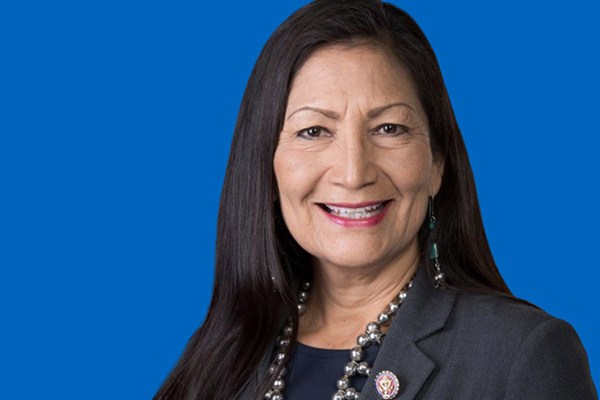
Deb Haaland
Secretary of the Interior
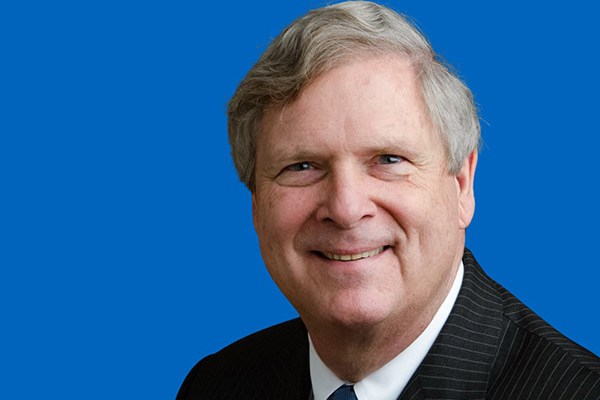
Tom Vilsack
Secretary of Agriculture
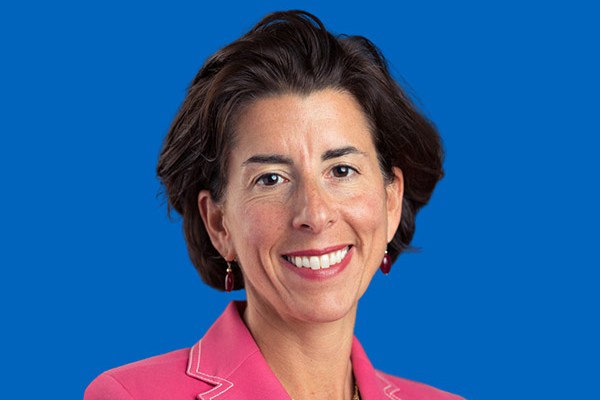
Gina Raimondo
Secretary of Commerce
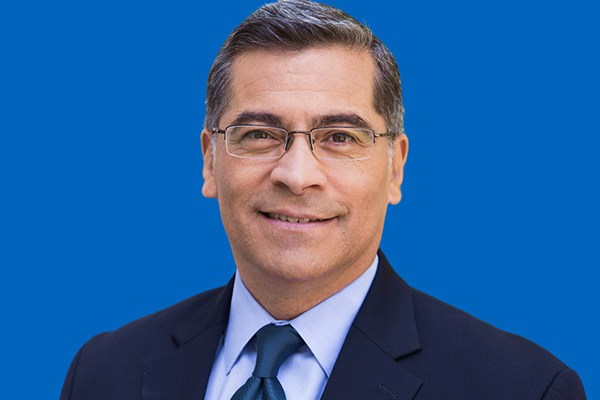
Xavier Becerra
Secretary of Health and Human Services
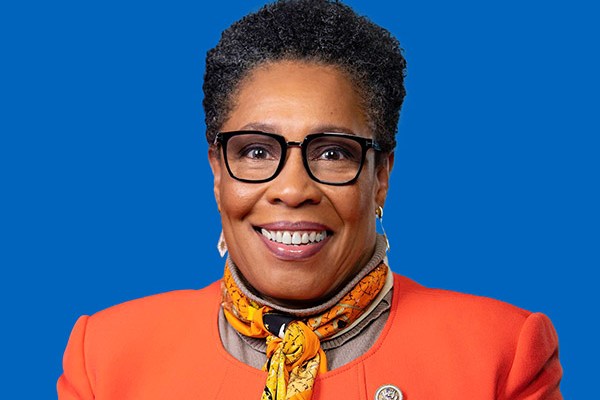
Marcia Fudge
Secretary of Housing and Urban Development
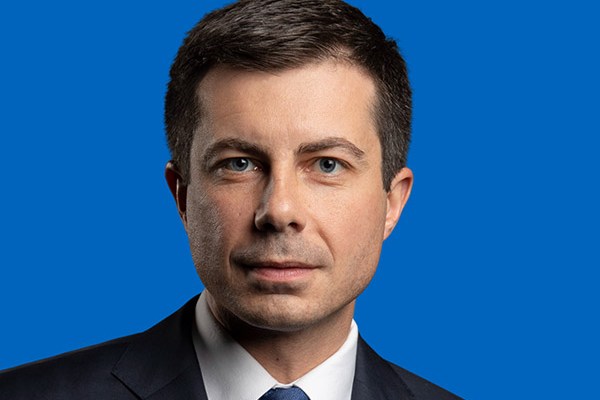
Pete Buttigieg
Secretary of Transportation
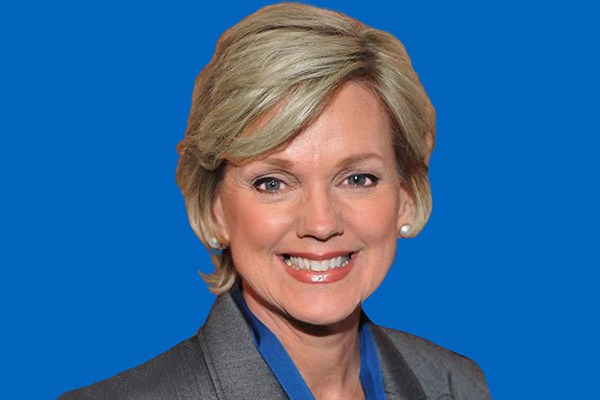
Jennifer Granholm
Secretary of Energy
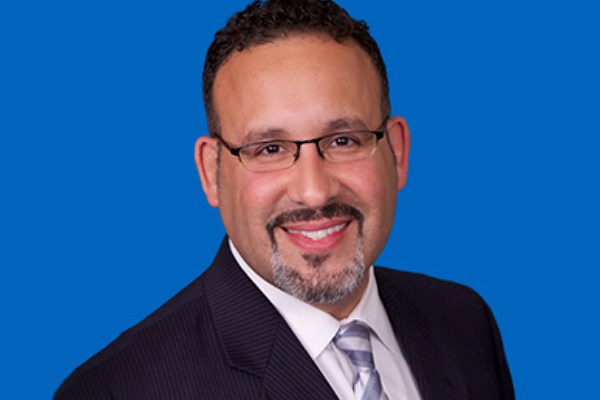
Dr. Miguel Cardona
Secretary of Education
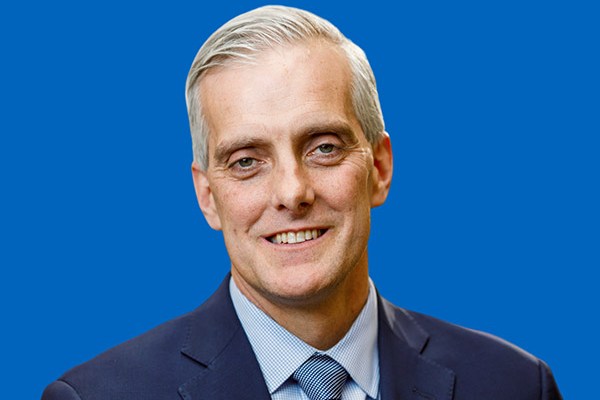
Denis McDonough
Secretary of Veterans Affairs
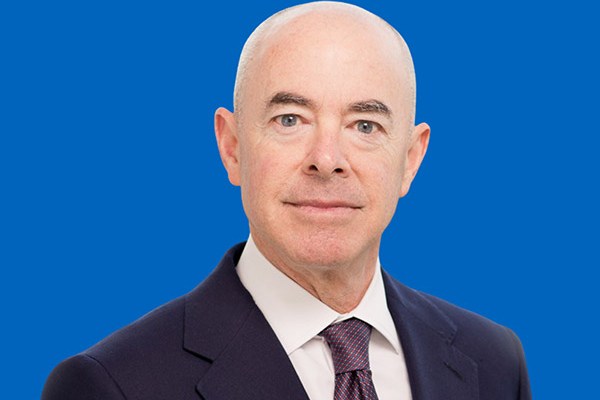
Alejandro Mayorkas
Secretary of Homeland Security
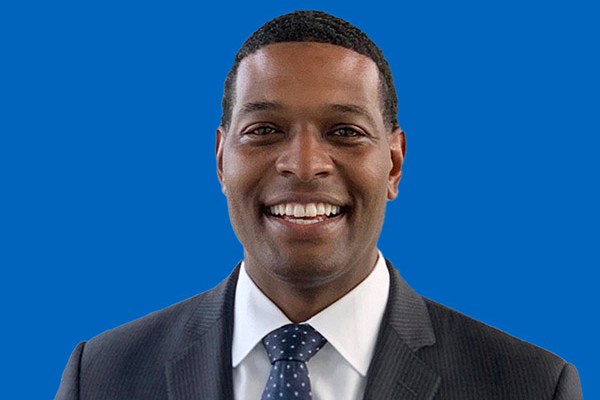
Michael Regan
ADMINISTRATOR OF THE ENVIRONMENTAL PROTECTION AGENCY
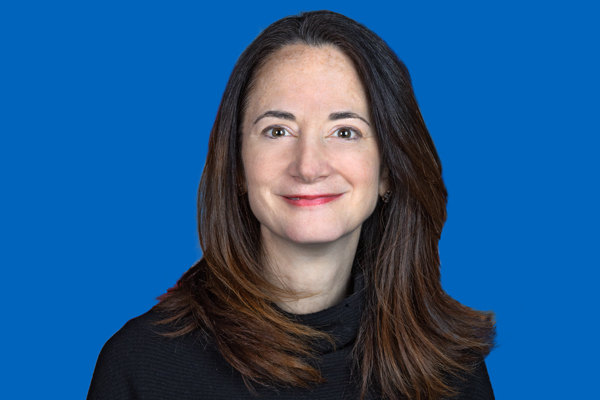
Avril Haines
Director of National Intelligence
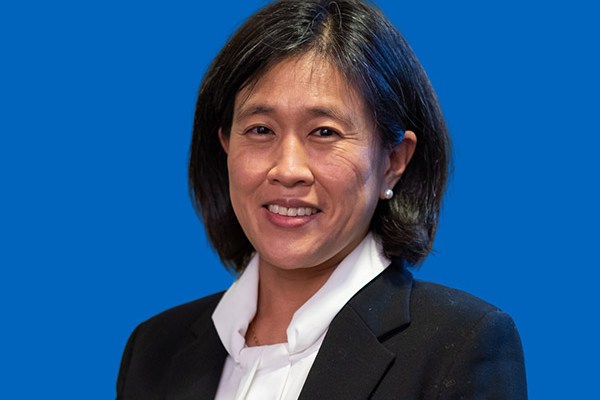
Katherine Tai
United States Trade Representative
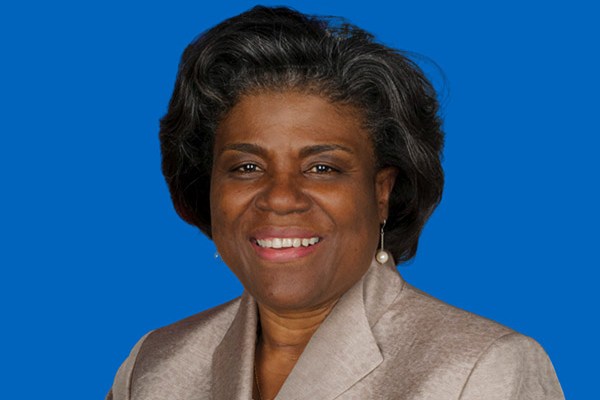
Linda Thomas-Greenfield
United States Ambassador to the United Nations
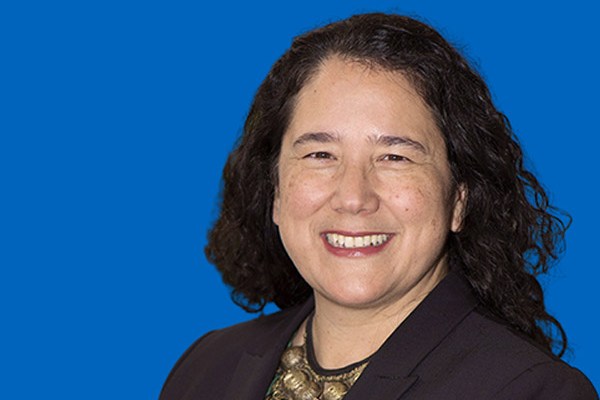
Isabel Guzman
Administrator of the Small Business Administration

Shalanda Young
Director of the office of management and budget
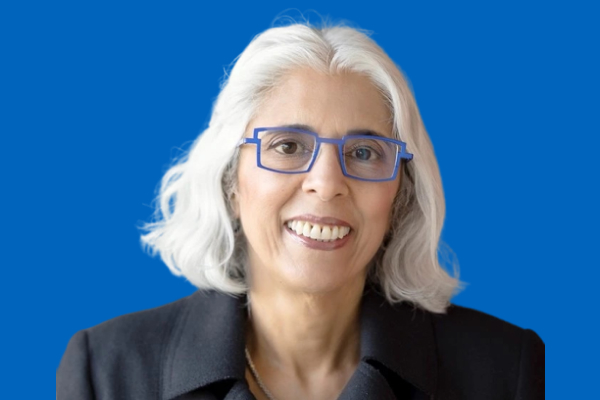
Dr. Arati Prabhakar
Director of the Office of Science and Technology Policy
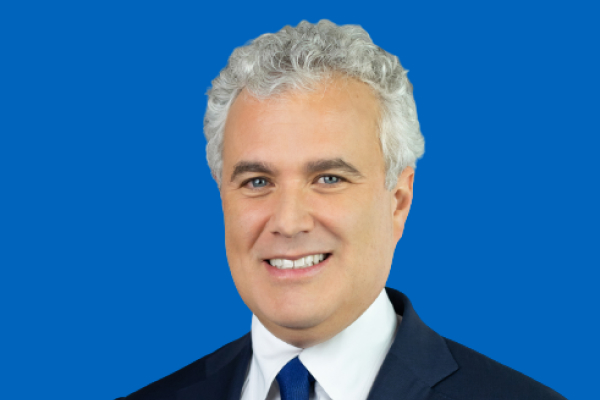
Jeff Zients
Chief of Staff

Stay Connected
|
|
Кабинет президента Соединённых Штатов включает в себя наиболее значимых назначаемых президентом США должностных лиц исполнительной ветви правительства США.
Возникновение этого института связывают с именем первого президента США (Джорджа Вашингтона), который впервые сформировал кабинет из четырёх приближённых к нему лиц Государственного секретаря США Томаса Джефферсона, министра финансов Александра Гамильтона, военного министра Генри Нокса и генерального прокурора США Эдмунда Рэндольфа, чтобы они помогали в выполнении его обязанностей. Кандидаты в члены Кабинета предлагаются президентом США и представляются Сенату США для утверждения в должности простым большинством голосов. Если назначение на должность одобряется Сенатом, то они приносят клятву, после чего приступают к выполнению своих обязанностей. За исключением генерального прокурора США и ранее генерального почтмейстера США, все члены Кабинета именуются секретарями, однако в русском переводе, за исключением Государственного секретаря США, все остальные члены кабинета именуются министрами.
Содержание
- 1 Кабинет Барака Обамы
- 1.1 Должностные лица, не являющиеся секретарями США, входящие в Кабинет
- 2 См. также
- 3 Источники
- 4 Ссылки
- 5 Примечания
Кабинет Барака Обамы
| Должность | Имя и фамилия | Фотография |
|---|---|---|
| Государственный секретарь | Хиллари Клинтон |  |
| Министр финансов | Тимоти Гайтнер |  |
| Министр обороны | Леон Панетта |  |
| Генеральный прокурор | Эрик Холдер |  |
| Министр внутренних дел | Кен Салазар |  |
| Министр сельского хозяйства | Том Вилсэк |  |
| Министр торговли | Джон Брайсон |  |
| Министр труда | Хильда Солис |  |
| Министр здравоохранения и социальных служб | Кэтлин Сибелиус |  |
| Министр жилищного строительства и городского развития | Шон Донован |  |
| Министр транспорта | Рэй Лахуд |  |
| Министр энергетики | Стивен Чу |  |
| Министр образования | Арне Дункан |  |
| Министр по делам ветеранов | Эрик Шинсеки |  |
| Министр национальной безопасности | Джанет Наполитано |  |
Должностные лица, не являющиеся секретарями США, входящие в Кабинет
| Должность | Имя и фамилия | Изображение |
|---|---|---|
| Вице-президент США | Джо Байден |  |
| Глава администрации Белого дома | Дэйли, Уильям |  |
| Администратор Агентства по охране окружающей среды | Лиза Джексон |  |
| Директор Административно-бюджетного управления США | ||
| Глава офиса торговых представителей США | Рон Кирк |  |
| Полномочный представитель США в ООН | Сьюзан Райс |  |
| Председатель Совета экономических консультантов | Кристина Ромер (до 2 сентября 2010 года)[1] |
 |
См. также
| Кабинет США на Викискладе? |
- Список Кабинетов США
Источники
- Rudalevige, Andrew. «The President and the Cabinet», in Michael Nelson, ed., The Presidency and the Political System, 8th ed. (Washington, D.C.: CQ Press, 2006).
- Grossman, Mark. Encyclopedia of the United States Cabinet (three volumes). Santa Barbara, California: ABC-CLIO, 2000. ISBN 0-87436-977-0. A history of the United States and Confederate States cabinets, their secretaries, and their departments.
- Bennett, Anthony. ‘The American President’s Cabinet’ Houndmills, Basingstoke, Hampshire: Macmillan, 1996. ISBN 0-333-60691-4. A study of the U S Cabinet from Kennedy to Clinton.
Ссылки
- Official site of the President’s Cabinet (англ.)
- Перечень членов Кабинета Президента США, которые не присутствовали во время ежегодных посланий Президента США к Конгрессу (начиная с 1984) (англ.)
Примечания
- ↑ Calmes J. Top Obama Adviser on Economics to Step Down // «The New York Times». August 5, 2010. (англ.) — (Проверено 9 августа 2010).
Наталья Николаевна Чувелева
Эксперт по предмету «Политология»
преподавательский стаж — 20 лет
Задать вопрос автору статьи
Кабинет министров США
Определение 1
Кабинет министров США – это высший орган управления исполнительной властью федерального правительства при президенте Соединенных Штатов.
Кабинет министров США назначается непосредственно президентом с согласия Сената.
Институт кабинета президента возник при Джордже Вашингтоне, первом президенте США, который в конце XVIII века создал кабинет из особо приближенных к нему советников: Томаса Джефферсона (государственного секретаря США), Александра Гамильтона (министра финансов США), Генри Нокса (военного министра и Эдмунда Рэндольфа (генерального прокурора США). Цель создания кабинета министров: предоставление помощи президенту США в выполнении его обязанностей.
Все члены кабинета министров Америки, за исключением генерального почтмейстера США и генерального прокурора США, являются руководителями всех центральных органов управления государством и называются «секретарями» (в системе государственных органов управления это соответствует должности министра), исключение – государственный секретарь США, или министр иностранных дел.
Порядок назначения администрации президента:
- Президент США предлагает кандидатов на посты в кабинете министров и предоставляет соответствующий список Сенату США для рассмотрения и утверждения кандидатов в должности.
- Утверждение проводится большинством голосов Сената.
- После одобрения кандидатов на должности министров в кабинете при президенте, они приносят клятву государству и народу США и приступают к выполнению своих должностных обязанностей.
Замечание 1
Некоторые должностные лица федерального правительства Америки, а именно: Директор ЦРУ (Центральное разведывательное управление), Директор Национальной разведки, на свои должности утверждаются Сенатом, но в состав Кабинета министров не входят.
«Кабинет министров США, его состав » 👇
Структура Кабинета министров США
На современном этапе развития кабинет министров США в его состав входят 15 министров, которые возглавляют ряд министерств:
- министерство финансов (министр Стивен Мнучин);
- министерство сельского хозяйства (министр Сонни Пердью);
- министерство торговли (министр Уилбур Росс);
- министерство образования (министр Бетси Девос);
- министерство обороны (министр Джеймс Мэттис);
- министерство энергетики (министр Рик Перри);
- министерство здравоохранения и социальных служб (министр Алекс Азар);
- министерство внутренней безопасности (министр Кирстен Нильсен);
- министерство жилищного строительства и городского развития (министр Бен Карсон);
- министерство юстиции (Генеральный прокурор Джефф Сешнс);
- министерство труда (министр Александр Акоста);
- министерство внутренних дел (министр Райан Зинке);
- министерство транспорта (министр Элейн Чао);
- министерство по делам ветеранов (министр Роберт Уилки).
Помимо Президента США в состав Кабинета входит вице-президент США (премьер-министр) (Майк Пенс), государственный секретарь (Майк Помпео), Глава аппарата Белого дома (Джон Келли), торговый представитель США (Роберт Лайтхайзер), Директор Национальной разведки (Дэн Коутс), постоянный представитель США при ООН (Никки Хейли), Директор Административно-бюджетного управления (Мик Малвейни), Администратор Агентства по охране окружающей среды (Скотт Прюитт), Администратор Управления по делам малого бизнеса (Линда Макмэн). В руководстве страной большая роль отводится Федеральному казначейству и Государственному департаменту.
Википедия дает полную информацию о каждом министре США.
Находи статьи и создавай свой список литературы по ГОСТу
Поиск по теме

